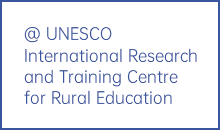In 2020, the COVID-19 pandemic has been raging around the world, causing unprecedented educational disruption across the planet. According to statistics published by UNESCO, more than 190 countries have temporarily closed educational institutions, impacting over one billion learners. Most governments are actively exploring distance learning solutions to ensure continuity, inclusion, quality and equity for all students. As one of the first countries affected by the pandemic, China has carried out large scale distance learning practices to ensure the target:“disrupted class, undisrupted learning”. These innovative approaches meet the needs of 280 million students for remote studies. At present, China has successfully managed the epidemic domestically, and has put in place measures to respond to periodic outbreaks. Consistent and cautious measures for resuming classes in schools have been taken. To date, all schools in China are fully reopened.
Given this global pandemic, prevention and control efforts will be the new normal into the near future. It will be an arduous task to resume work, production and education, and ensure the safety of campuses, the health of teachers and students, and thus, protect the right to education. Facing these challenges, it is necessary to summarize and share experiences and lessons of education’s response to the pandemic in a timely manner. It is also necessary to jointly explore and build a global normalized mechanism in response to the infuence of COVID-19 and any similar crises in the future.
Therefore, the Chinese Ministry of Education and the Chinese National Commission for UNESCO, with support from UNESCO Beijing, UNICEF China, and WHO China, have developed this Reference. All the above-mentioned organizations have made positive contributions to the development of the Reference based on their relevant mandates. The Reference is composed of four parts: Preschool Education, Primary and Secondary Education, Higher Education, and Technical and Vocational Education and Training.Each part mainly includes three modules, namely, Distance Teaching and Learning, School Reopening, and Mental Health of Teachers and Students. The Reference is based on existing Chinese government regulations and instructions regarding COVID-19 and education, and is in line with recommendations made by the above international organizations to the pandemic. It aims to provide a focused, effective and practical referential framework for dealing with the current challenging situation, and contribute to coping with similar crises in the future. The content of this Reference draws from Chinese experience and guidance, which can be of interest to other countries as well. It is important to note that with the pandemic developing and response measures improving, the education response solutions will be upgraded in all countries. Meanwhile, the solutions vary with country conditions, cultures, systems and mechanisms. We hope this Reference will contribute to 1) strengthen the solidarity of the international community to fght against the pandemic, 2) assist more students to safely return to school so as to protect people’s right to education and better ensuring the equity and quality of education, and 3) enhance the resilience of the global education system and the educational emergency response capacity.













